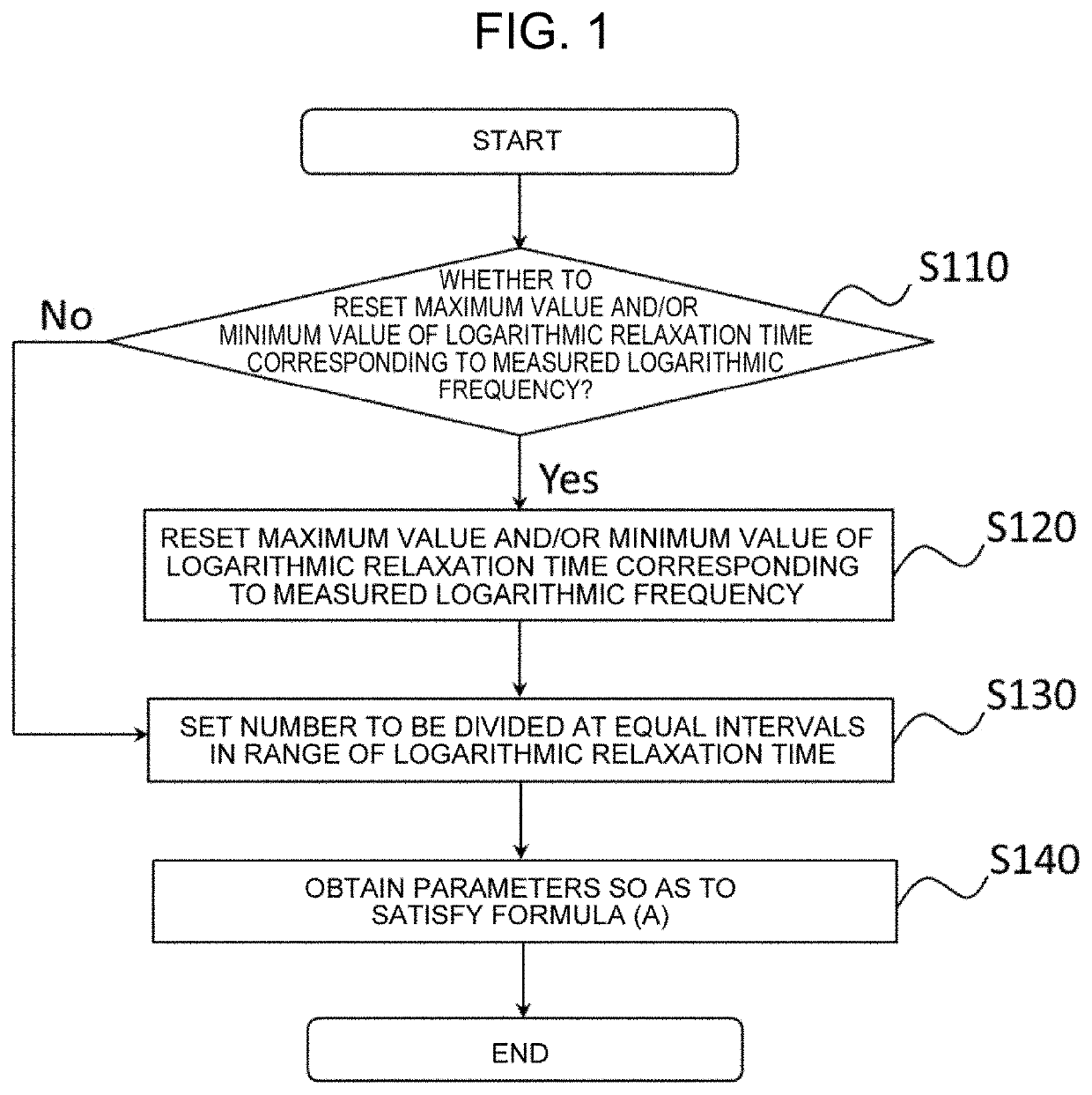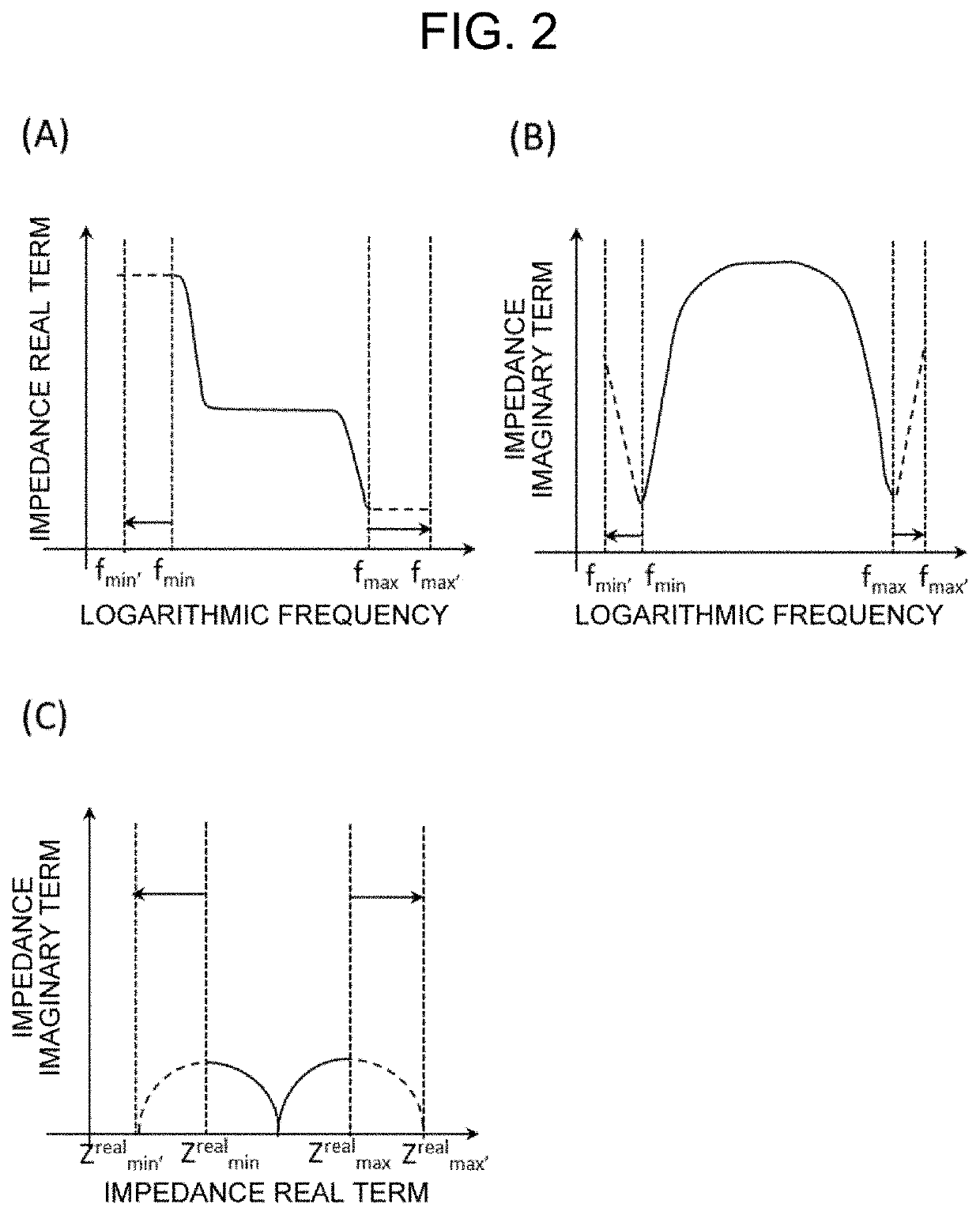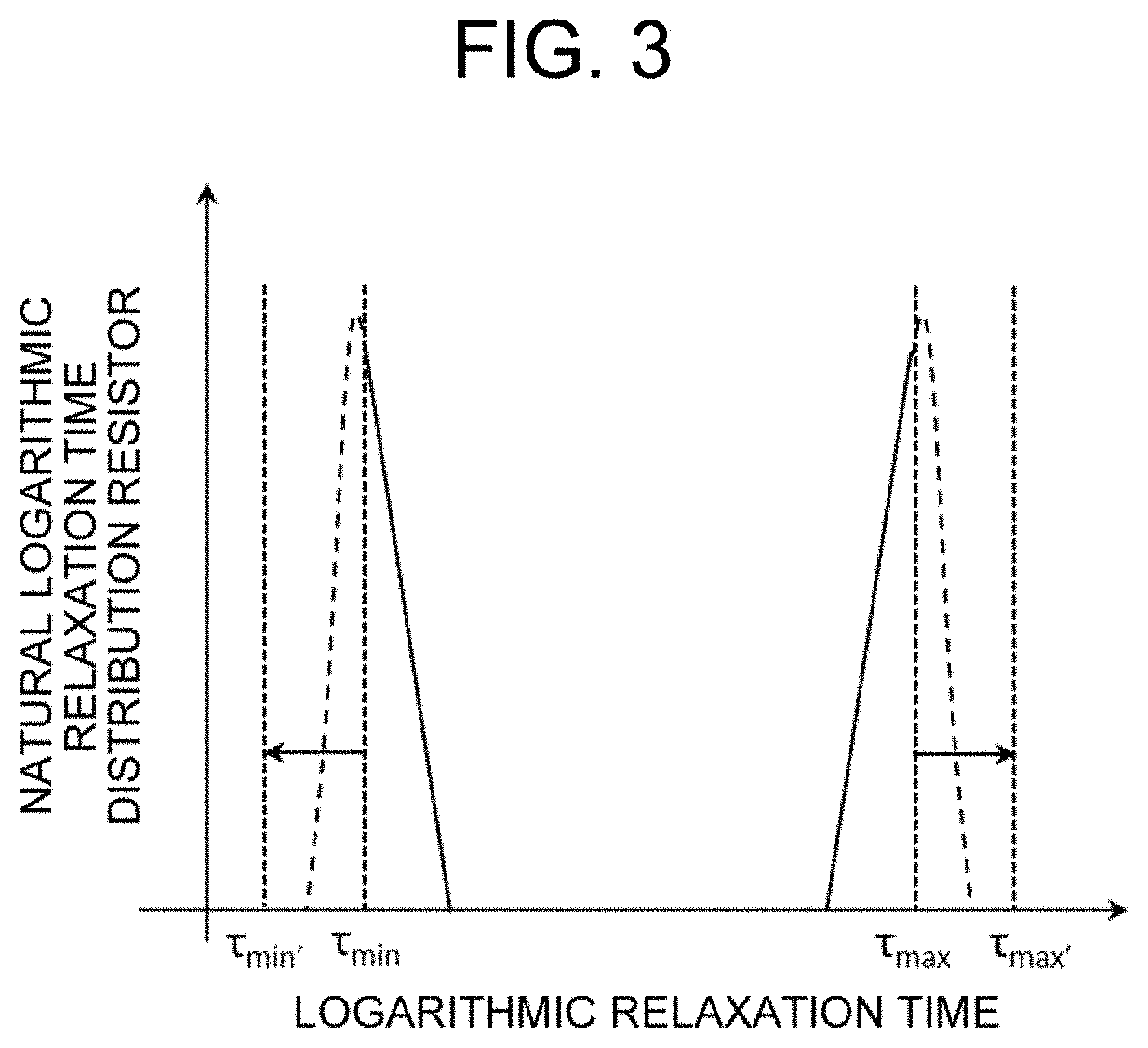Analysis processing method using impedance spectrum data, impedance spectrum data analysis processing system, and impedance spectral analysis processing program
a technology of analysis processing and impedance spectrum data, applied in capacitor manufacturing, sustainable manufacturing/processing, instruments, etc., can solve the problems that the value set obtained by applying the formulas (a) and (b) may not be able to reproduce and achieve high accuracy and reproducibility. the effect of the measured impedance spectrum data
- Summary
- Abstract
- Description
- Claims
- Application Information
AI Technical Summary
Benefits of technology
Problems solved by technology
Method used
Image
Examples
example 1
[0113]In Example 1, the analysis processing method shown in FIGS. 1 to 4 was carried out based on the impedance spectrum data (FIG. 7) measured by the same electric circuit as in Comparative Example 1. Specifically, FIGS. 7(A) to 7(C) and FIG. 8 were referred to, and it was determined whether to reset the maximum value and / or the minimum value of the logarithmic relaxation time corresponding to the measured logarithmic frequency (step S110 in FIG. 1). The determination was made visually.
[0114]The maximum value and minimum value of the logarithmic relaxation time were manually reset to log(1 / (2π×10−2 [s])) and log(1 / (2π×109 [s])) so that the impedance real term would be a plateau on the low frequency side and the high frequency side beyond the measured logarithmic frequency range (1 Hz to 1 MHz) in FIG. 7A, so that the impedance imaginary term would have a peak on the low frequency side and the high frequency side beyond the measured logarithmic frequency range (1 Hz to 1 MHz) in FIG...
example 2
[0127]In Example 2, the analysis processing method shown in FIGS. 1 to 4 was carried out based on the impedance spectrum data (FIG. 12) measured by the same coin-type lithium battery as in Comparative Example 2. Specifically, FIG. 13 was referred to, and it was determined whether to reset the maximum value and / or the minimum value of the logarithmic relaxation time corresponding to the measured logarithmic frequency (step S110 in FIG. 1).
[0128]The maximum value and minimum value of the logarithmic relaxation time were manually reset to log(1 / (2π×10−3 [s])) and log(1 / (2π×106 [s])) so that as if Rk had a peak beyond the range of the logarithmic relaxation time in FIG. 13.
[0129]The number to be divided at equal intervals in the range of the logarithmic relaxation time set was manually set to 10 points per digit of the relaxation time on a logarithmic scale (step S130 in FIG. 1). Next, regularized least squares was applied to analyze parameters R∞, T, L, and Rl with respect to the range...
example 3
[0141]In Example 3, the analysis processing method shown in FIGS. 1 to 4 was carried out based on the impedance spectrum data (FIG. 17) used in Comparative Example 3. Specifically, FIG. 18 was referred to, and it was determined whether to reset the maximum value and / or the minimum value of the logarithmic relaxation time corresponding to the measured logarithmic frequency (step S110 in FIG. 1).
[0142]The maximum value and minimum value of the logarithmic relaxation time were manually reset to log(1 / (2π×10−2 [s])) and log(1 / (2π×106 [s])) so that as if Rk had a peak beyond the range of the logarithmic relaxation time in FIG. 18.
[0143]The number to be divided at equal intervals in the range of the logarithmic relaxation time set was manually set to 10 points per digit of the relaxation time on a logarithmic scale (step S130 in FIG. 1). Next, regularized least squares was applied to analyze parameters R∞, T, L, and Rl with respect to the range of the logarithmic relaxation time set and t...
PUM
| Property | Measurement | Unit |
|---|---|---|
| impedance spectrum | aaaaa | aaaaa |
| logarithmic relaxation time | aaaaa | aaaaa |
| logarithmic frequency | aaaaa | aaaaa |
Abstract
Description
Claims
Application Information
 Login to View More
Login to View More - R&D
- Intellectual Property
- Life Sciences
- Materials
- Tech Scout
- Unparalleled Data Quality
- Higher Quality Content
- 60% Fewer Hallucinations
Browse by: Latest US Patents, China's latest patents, Technical Efficacy Thesaurus, Application Domain, Technology Topic, Popular Technical Reports.
© 2025 PatSnap. All rights reserved.Legal|Privacy policy|Modern Slavery Act Transparency Statement|Sitemap|About US| Contact US: help@patsnap.com



